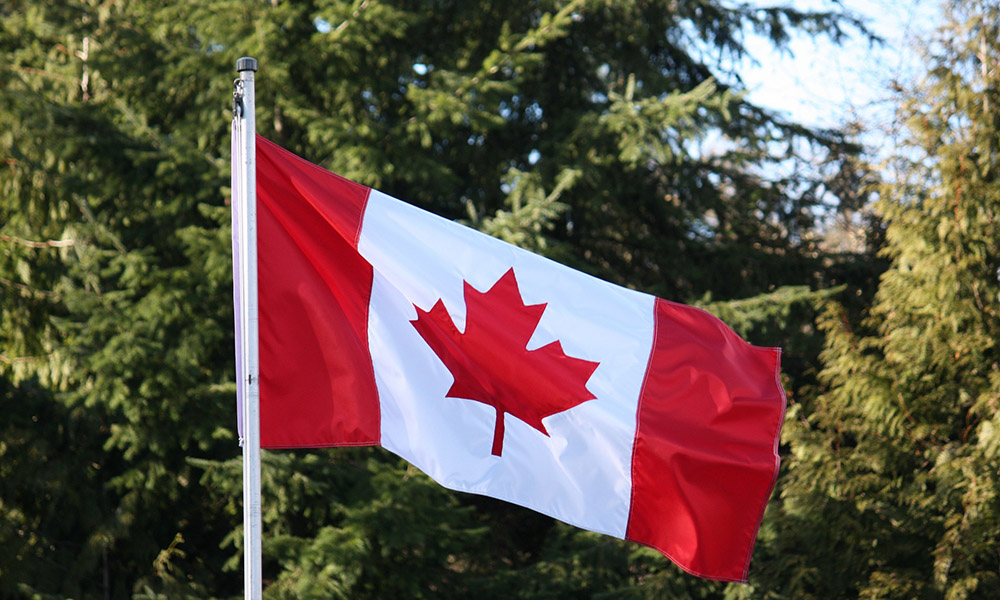
Economics
Inside Canada’s New Cannabis & Hemp Regulations
As Canada moves towards legalizing cannabis for adult use, the government is in the process of setting up new regulations for adult-use cannabis, medical cannabis and hemp. These regulations are complicated, and they also will impact Canadian cannabis exports and international investment opportunities. Three lawyers explain what you need to know.
Access to medical cannabis in Canada has been permitted since 1999. The current Canadian framework allowing Canadians access to medical cannabis is found in the Access to Cannabis for Medical Purposes Regulations (the “ACMPR”), which has been in place as of Aug. 24, 2016, and sets out the current legal structure of Canada’s evolving medical cannabis framework. Because legislators and regulators in Canada are currently changing the country’s medical cannabis laws, it is worth examining where the industry stands today.
Adult-Use and Medical Cannabis in Canada
Canada’s proposed adult-use law is designed to “keep cannabis out of the hands of children and youth and keep profits out of the hands of organized crime.” In May 2017, Health Canada committed to streamlining the medical license application process to enable increased production for medical purposes, also ensuring supply meets demand once the adult-use legislation is enacted. As of late 2017, approximately 200 applications for a medical license are close to being issued a license. What these measures would suggest is that Health Canada continues to focus on reducing the scale of the illicit cannabis market and aligning its approach with regulations, “the existing evidence of risks to public health and safety, and its approach to other regulated sectors.”
Health Canada is the Canadian federal department responsible for licensing and overseeing the commercial medical cannabis industry, and registering individuals to produce cannabis for their own medical purposes. Under the licensing process, Health Canada can authorize each Licensed Producer (known as an “LP”) to cultivate, process, sell, import/export and other related activities, and Licensed Dealers to test, transport and deliver cannabis as well as sell to authorized persons, among other related activities.
As part of the election promise to legalize cannabis, the Liberal Party of Canada introduced into the House of Commons “Bill C-45” on April 13, 2017, which, once passed, makes cannabis use legal in Canada and amends other related acts, such as the criminal code and the Controlled Drugs and Substances Act with respect to cannabis. Bill C-45 is currently in the Senate for approval, the final review process prior to a bill receiving Royal Assent and becoming law. The intention of the Canadian federal government is that Bill C-45 receive Royal Assent during the summer of 2018.
According to section 158(1) of the proposed law, a Licensed Producer authorized to cultivate, process and sell cannabis under the ACMPR for medical purposes is deemed to be a licensee issued under section 62 of Bill C-45. This means that ACMPR medical cannabis LPs are also automatically permitted to grow and sell non-medical cannabis. In addition, the regulations for the adult-use industry — released in November 2017 — outline a framework to permit smaller scale licenses, known as micro licenses to engage in micro-cultivation, micro-processing, and sales, promoting a craft cannabis market in Canada. Until the final regulations are published, the application process for micro licenses remains unclear, as does the definition of “micro,” with possible defining considerations including canopy space, plant count, square footage of grow space, gross revenue and so on.
Under the proposed regulations, each of Canada’s 13 provinces and territories are tasked with implementing a distribution and retail sale framework for the sale of cannabis for non-medical purposes. If a province or territory has not created the above framework by the time the bill is enacted, the regulations will allow the Canadian federal government to implement a mail order system in that province or territory.
Hemp in Canada
There are many varieties of the cannabis plant, and hemp, also called industrial hemp, refers to the varieties of Cannabis sativa L. which typically contains less than 1 percent tetrahydrocannabinol (or THC). Although cannabis is a controlled substance in Canada, there are exceptions, including medical cannabis use and industrial hemp, under the Industrial Hemp Regulations (IHR).
The IHR defines Industrial Hemp as “the plants and plant parts of the genera Cannabis, the leaves and flowering heads of which do not contain more than 0.3 percent THC”, and permits certain activities with respect to hemp for commercial purposes through a licensing system. However, current licenses granted under the IHR expire in the calendar year they are issued.
Under Canada’s proposed new cannabis regulations, every license or authorization issued under the IHR prior to the commencement date of Bill C-45 will be deemed to be a license issued under Section 62 of that law. According to the draft regulations, non-viable seed, mature stalk without any leaf, flower, seed or branch fall outside the scope of the adult-use law, and therefore no license would be required for processing or sale, or for the sale of any derivatives of seed and grain containing 10 micrograms/grams THC.
The IHR applies to the importation, exportation and possession of industrial hemp and its production, sale, provision, transport, sending or delivering. The IHR does not apply to the importation, exportation, sale or provision of whole industrial hemp plants, including sprouts, or the leaves, flowers or bracts of those plants, or their derivatives, or any derivative of seed, viable or non-viable seed, or products from that derivative, if the derivative or product contain more than 10 micrograms/gram THC.
Both Canada’s Controlled Substances Act and the IHR do not apply to the importation, exportation or wholesale sale of a derivative of seed, viable grain or non-viable cannabis seed, or a product made from that derivative, if not made from whole industrial plants (including sprouts, leaves, flowers or bracts of those plants). The laws also do not apply to an industrial hemp derivative or product that has 10 micrograms/gram THC or less, labelled as such, and accompanied by a certificate of THC from a trusted laboratory. An example of such a derivative or product that the Controlled Substances Act or IHR would not apply to may be hemp seed oil and flour with less 10 micrograms/gram THC or less.
Under the proposed regulations for Canada’s adult-use cannabis market, industrial hemp would be defined as “cannabis plants whose leaves and flowering heads do not contain more than 0.3 percent THC,” and similar to the micro-license framework for non-medical cannabis, industrial hemp licenses will be permitted to possess, transport, research and sell industrial hemp leaves, flowers and branches (or the whole plant).
The regulations will also modify existing physical security requirements for industrial hemp licenses and begin treating industrial hemp storage as any other agricultural product. This includes a proposal to remove a current IHR requirement that industrial hemp be stored in a locked container or location, or premises to which only authorized persons have access.
Currently, industrial hemp licences authorize the cultivation of industrial hemp from approved varieties from pedigreed seeds, those that have been confirmed to consistently produce less than 0.3 percent or less THC. The benefit of using approved pedigreed seeds is that these licensees would be permitted to bypass the lab THC testing requirement. Lab testing would remain mandatory for those Industrial Hemp licensees under the new regulations who do not use pre-approved pedigreed seeds to confirm THC content.
Canadian Capital Markets and Cannabis
On October 16, 2017, the Canadian Securities Administrators released a bulletin which recognized the illegal status of cannabis at the federal level in the U.S., the conflict between the U.S. federal and state cannabis laws and the general U.S. policy based on the Cole Memorandum. This bulletin is currently under review by the CSA in light of U.S. Attorney General Jeff Sessions rescinding of the Cole Memorandum on Jan. 4 of this year.
“We remind investors that the political and regulatory circumstances surrounding the treatment of U.S. marijuana-related activities are uncertain,” the bulletin read. “In the event that U.S. federal law against marijuana is enforced, there could be material consequences for any issuer with U.S. marijuana- related activities, including prosecution and asset seizure.”
The CSA Staff Notice deferred to Canadian exchanges whether to list or maintain listings of issuers with exposure to the U.S. cannabis industry. The approach taken in Canada by the three major equity changes — the TSX, the TSXV and the CSE — differ. With the TSX and the TSXV, issuers with exposure to the U.S. cannabis industry are deemed to be non-compliant with listing requirements. However, the Canadian Securities Exchange (the CSE) permits issuers to list and maintain their listings with U.S. cannabis-related activities, provided they comply with the U.S. state law in which they operate and meet the risk disclosure requirements under Canadian securities law as highlighted in the CSA Staff Notice.
On Jan. 12, the CSA issued a press release indicating it is “considering whether our disclosure-based approach for issuers with U.S. marijuana-related activities remains appropriate in light of the rescission of the Cole Memorandum.” On February 8, 2018, the CSA concluded “that a disclosure-based approach remains appropriate in the current circumstances,” meaning that their policy would not change.
Exporting Canadian Cannabis
Under the Canada’s medical marijuana laws, an LP can obtain authorization from Health Canada to export cannabis internationally. Until recently, when countries such as Australia and Colombia relaxed rules to allow for the exportation of medical cannabis, Canada faced little competition exporting cannabis globally, gaining first mover advantage into emerging markets such as Germany, Australia, Brazil, Chile, Croatia and New Zealand among others.
Though Canada remains one of 185 parties to three United Nations drug control conventions — the 1961 Single Convention on Narcotic Drugs, the 1971 Convention on Psychotropic Substances and the 1988 Convention against the Illicit Trade in Narcotic Drugs and Psychotropic Substances — other countries continue to watch Canada, the first G7 country, refine its medical cannabis framework and implement a federal regulated non-medical cannabis industry as well. Germany, for example, reached an agreement with Canada to import Canadian medical cannabis while looking to also implement a government regulated medical cannabis framework.
Canada stands to be a leader in the world in setting the standard for developing an accountable and reliable regime for cannabis regulation.
Also by Brent Johnson, COO of Hoban Law Group Denver, and Nav Pannu of Bax Securities Law of Toronto.
TELL US, do you understand the Canadian cannabis framework?


























